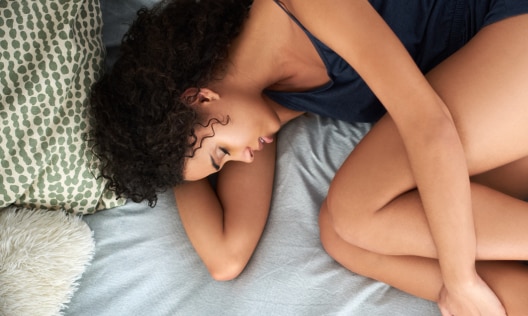When Was Deodorant Invented? Tracing the roots of staying fresh

Have you ever wondered when deodorant or antiperspirant was invented? It’s fascinating to think about how we went from ancient scent rituals to the deodorants we rely on today. Let’s take a look at the history of deodorant and see how it’s changed over time to become such an important part of our daily lives.
From the first antiperspirants to the latest innovations, we’ll show you how the industry has evolved to create products for every need—including those designed especially for melanin-rich skin.
The history of deodorant: The beginnings
Body odor has been a part of human life for centuries, with ancient cultures addressing it in different ways. The Egyptians found it unpleasant and used scented oils and perfumes made from flowers and herbs to mask it. Some even created pastes from natural ingredients like ostrich eggs and tortoise shells to apply to their bodies.1 Meanwhile, in ancient Rome, public baths were a common practice, and people used a mixture of oils and scrapers called strigils to cleanse their bodies.2
By the 13th century, chemists perfected distillation, extracting essential oils from natural substances to mix with alcohol and create modern, quick-drying perfumes. The first major alcohol-based fragrance, Hungary Water, was crafted in the late 14th century for Queen Elisabeth of Hungary.1
By the late 1800s, body odor was increasingly viewed as a sign of poor hygiene, leading to the invention of products specifically designed to eliminate odor. Talcum powder, a popular early solution, absorbed perspiration and moisture and was used to combat body odor, particularly from the underarms and feet.3
In the late 19th century, innovations in application methods began, including the introduction of the roll-on applicator in 1952. Alongside this, foot deodorants developed in parallel with underarm products, tackling foot odor and excessive perspiration.3 Over time, these products continued to evolve to meet changing needs in personal hygiene.
The first deodorant and antiperspirant
The journey of modern deodorant started in 1888 with the invention of Mum, a cream created by an unknown innovator in Philadelphia. Designed to fight odor, Mum was the first commercial deodorant and set the stage for what we use today. It was formulated as a waxy cream that users rubbed into their armpits, applied to feet and even to sanitary napkins.3
By 1903, the first antiperspirant hit the scene, using aluminum chloride to block sweat. While effective, these early formulas were far from perfect—they were highly acidic, often damaged clothing, and left a noticeable sting.1
Deodorants for melanin-rich skin
Let’s face it—melanin-rich skin deserves deodorants that meet its unique needs with care and precision. Women with melanin-rich skin may experience challenges like underarm dryness, sensitivity, or discoloration, making it essential to have products designed with these concerns in mind.
That’s where specially formulated deodorants come in. By using gentle, nourishing ingredients, these deodorants work to hydrate the skin, soothe irritation, and maintain an even tone, all while providing lasting protection against sweat and odor.
The newest innovations in deodorants for melanin-rich skin, like the SheaMoisture range of deodorants are crafted with thoughtful care, ensuring they respect your skin’s natural beauty. These products are more than just deodorants—they’re part of a holistic approach to self-care that keeps you feeling fresh, confident, and radiant every day.
The rise of whole body deodorants
Whole body deodorants have emerged as a game-changing innovation in the personal care industry. The concept of full-body deodorants was introduced in the early 2000s, as brands began to recognize the need for products that could address sweat and odor in multiple areas of the body, not just the underarms.
While the exact inventor of the whole body deodorant is not widely credited to a single individual, SheaMoisture has helped popularize the category through a range of whole body deodorants.
These deodorants typically contain nourishing ingredients such as shea butter, aloe, and coconut oil, making them a gentle and moisturizing alternative for sensitive skin.
Frequently asked questions (FAQs)
When did roll-on deodorants become popular?
The first roll-on deodorant, inspired by the ballpoint pen, was introduced in the 1950s. This innovation made applying deodorant more convenient and effective, quickly gaining popularity. The roll-on design allowed for a precise application, an even distribution and protection against odor.
What is the difference between deodorant and antiperspirant?
Understanding the difference between deodorant and antiperspirant is key to choosing the right product for your needs. Deodorants mask or eliminate body odor, often using antibacterial agents to reduce the bacteria that cause odor. Antiperspirants, on the other hand, reduce sweat production. They usually contain aluminum-based compounds that temporarily block the sweat glands, keeping you dry and odor-free.
What are whole-body deodorants, and how do they work?
Unlike traditional deodorants that are applied to the underarms, whole-body deodorants (like the SheaMoisture Coconut & Hibiscus Whole Body Deodorant Invisible Stick) can be used on various parts of the body. They work by neutralizing odor-causing bacteria and providing a fresh scent wherever applied.
Deodorant and antiperspirant have a long, interesting history, shaped by different cultures and their changing needs. From ancient solutions to today’s modern products, they’ve come a long way in helping us feel fresh and confident.
References
Dive into more self-care tips and how-to guides.
- slide 1
- slide 2
- slide 3







